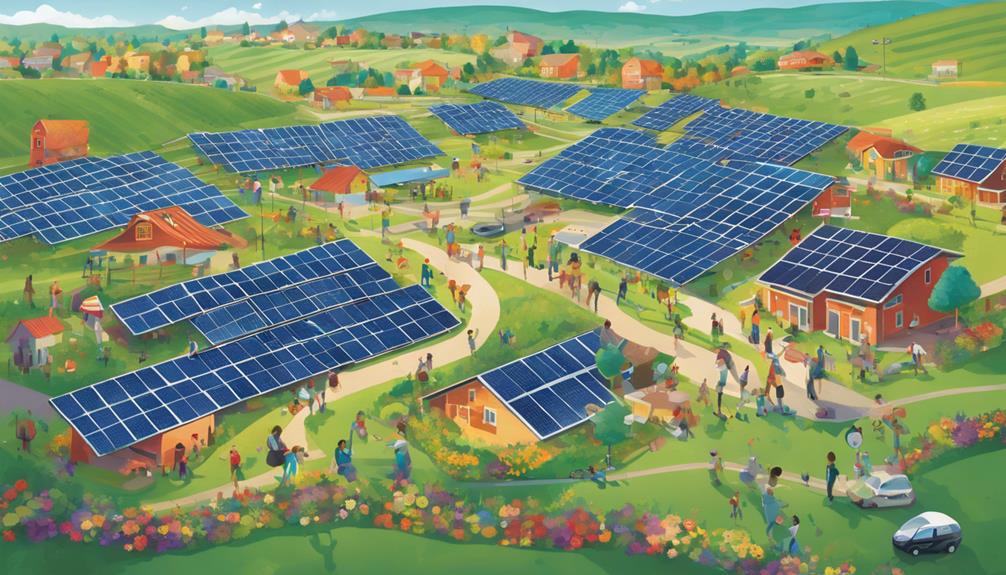
Introduction to Solar Panel Sizes
When considering solar energy for your home or business, one of the most common questions is, “How big are solar panels?” Understanding the size of solar panels is crucial for planning your solar energy system, evaluating roof space, and estimating energy production. Solar panels come in various sizes, and their dimensions can significantly impact the overall effectiveness of a solar installation. In this article, we will explore the typical sizes of solar panels, their efficiency, and how these factors play a role in your solar energy decisions.
Standard Dimensions of Solar Panels
Most solar panels on the market today are built using standardized sizes to facilitate easy installation and compatibility. The most common type, the monocrystalline solar panel, typically measures about 65 inches by 39 inches (approximately 1.6 meters by 1 meter). This size is popular due to its efficiency and the amount of space it occupies on rooftops. Other types, such as polycrystalline and thin-film panels, may have slightly different dimensions, but they generally fall within a similar range. Understanding these dimensions helps homeowners and businesses calculate how many panels they can fit on their roofs and how much energy they can expect to generate.
Factors Influencing Solar Panel Sizes
The size of solar panels can be influenced by various factors, including the technology used in manufacturing, the design preferences of the manufacturer, and the intended application. For instance, residential solar panels often prioritize efficiency and compactness, while commercial solar panels may be larger to maximize surface area and energy production. Additionally, advancements in solar technology, such as bifacial panels that capture sunlight from both sides, may lead to variations in size and efficiency. Understanding these factors can help consumers choose the right solar panel for their specific needs.
How Solar Panel Size Affects Energy Output
The size of solar panels directly correlates with their energy output. Generally, larger panels can produce more electricity than smaller ones, assuming they have a similar efficiency rating. For example, a standard monocrystalline panel may produce between 250 to 400 watts of power, depending on its size and efficiency. Therefore, if space allows, opting for larger panels can lead to increased overall energy production. However, it is essential to balance size with roof space, shading, and aesthetic considerations when planning a solar installation.
Understanding Solar Panel Efficiency Ratings
Besides size, the efficiency of solar panels is another crucial factor to consider. Solar panel efficiency refers to the percentage of sunlight that is converted into usable electricity. Most residential solar panels have an efficiency rating between 15% and 22%. Higher efficiency panels may be slightly smaller in size while still providing substantial energy output, making them ideal for limited roof space. When evaluating solar panels, consider both the size and efficiency to find the best combination for your energy needs.
Comparing Different Types of Solar Panels
As mentioned earlier, there are various types of solar panels, each with its own size and efficiency characteristics. Monocrystalline panels are known for their high efficiency and sleek appearance, making them a popular choice for residential installations. Polycrystalline panels, while slightly less efficient, are often more affordable and come in larger sizes. Thin-film solar panels are lightweight and flexible but generally have lower efficiency and require more space to produce the same amount of electricity as crystalline panels. Understanding these differences can help consumers make informed choices about which type of solar panel best suits their needs.
Solar Panel Size and Installation Considerations
When planning a solar installation, it’s crucial to consider the size of the solar panels in relation to your roof or installation area. Roof size, orientation, and shading from trees or nearby buildings can all impact the effectiveness of your solar system. For example, a smaller roof may require more efficient solar panels to maximize energy production, while a larger roof might accommodate larger panels or a greater number of standard-sized panels. Consulting with a solar energy professional can help you evaluate your options and design a system that effectively meets your energy needs.
The Future of Solar Panel Sizes and Technology
As solar technology continues to evolve, we can expect to see changes in solar panel sizes and efficiencies. Innovations such as Bifacial solar panels, which harness sunlight on both sides, and building-integrated photovoltaics (BIPV), which incorporate solar cells into building materials, are leading to new possibilities in solar energy generation. These advancements may result in panels that are more efficient and adaptable to various spaces, making solar energy even more accessible for homeowners and businesses. Staying informed about these developments can help you make the best decisions for your solar energy investment.
Conclusion: Making the Right Choice for Your Solar Needs
In summary, understanding how big solar panels are, along with their efficiency and various types, is essential for anyone considering solar energy. The size and type of panels you choose can significantly impact your energy output, installation process, and overall satisfaction with your solar investment. By considering your space, energy needs, and the latest advancements in solar technology, you can make a well-informed decision that will benefit you for years to come. Whether you opt for traditional monocrystalline panels or explore newer technologies, embracing solar energy is a step towards a more sustainable future.





